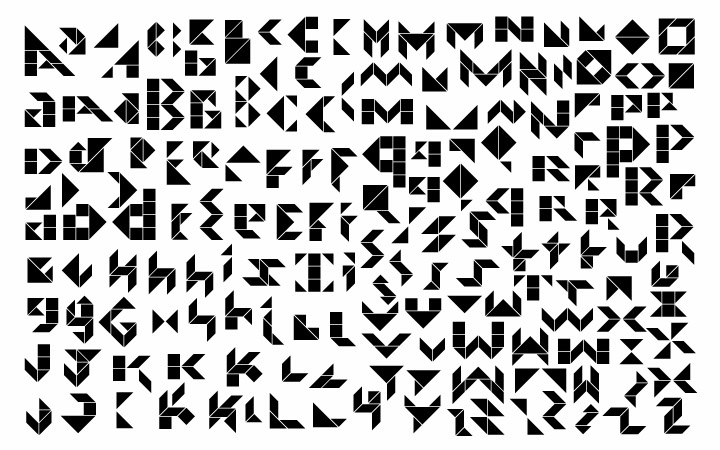Tangrams are possibly among the easiest of puzzles to make, and the among hardest to master. The traditional tangram is composed of seven pieces – 2 large triangles, a medium sized triangle, 2 small triangles, a square, and a parallelogram – that will fit together into a perfect square, among thousands of other shapes. The pieces themselves are called tans, while the images created with them are called tangrams. The challenge of the puzzle is to create various shapes by arranging the pieces so that they touch, but do not overlap. Patterns can vary from very easy to form to extraordinarily difficult to figure out.
Tangrams can also be used in storytelling. As the story is related, the teller can arrange one or two sets of tans into characters and objects in the story. A great example of this can be found in the picture book Grandfather Tang’s Story by Ann Tompert.
In this story, a grandfather shares a story with his granddaughter using two sets of tans to create the various animals he mentions in the story. After he finishes the story, they create one together, both creating shapes for the other to guess. The solutions to how to arrange the pieces to create the shapes the grandfather makes are provided in the story for readers to follow along.
There is also picture book that relates one theory about the origin of the tangram, The Warlord’s Puzzle, by Virginia Walton Pilegard. If you look closely at the illustrations throughout the book, the tile pieces are arranged into various animal shapes on some pages. In this book, a young boy is the hero who solves the puzzle of how to create a square with the pieces of a broken tile.
There are quite a number of books on both the history of the tangram and full of tangram puzzles and their solutions. There are also plenty of on-line resources that can be used to create tangram programming for children. Some sites of interest are:
NRICH: Enriching Mathematics: At this site there is a printable set of tans one can use, or readers can use the online tans to create the images offered in the story, “World of Tan.”
Here are other tangram-like puzzles to solve.
Activity Village also offers a variety of tangram activities and challenges.
Fun Stuff to Do offers a selection of links to even more tangram activities and challenges.
Logicville offers a very long list of solutions to tangram puzzles for those who get impatient for the answers.
Tangram Channel offers patterns for both two dimensional and 3D tans for the more adventurous puzzle solvers.
At various times I have printed black and white tangrams for children to color, cut out, and then take home in postage envelopes. I have printed tangrams on colored card stock and cut them out ahead of time. I have purchased them inexpensively at places like Dollar Tree and Michaels (usually close to Christmas). They can also be found online in bulk quantities for libraries with the funds to afford them. I also created a set in colored felt to use on a felt board with picture books and for when I teach the process of trial and error to solve the puzzles.
Tangrams can be a great way for younger children to learn the basic shapes and enjoy stories. It’s fun to watch the images from the story being created from basic shapes they are learning. For older kids, they can be wonderful for teaching problem solving and experimentation, as well as patience. They feel a powerful sense of accomplishment when they discover the solutions on their own. Tangrams are even great for family programming, since they offer the opportunity for families to work together to reach a solution.






Leave A Comment